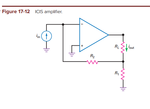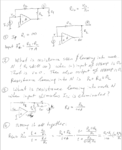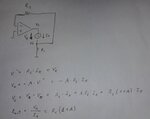paulmdrdo
Full Member level 3

Good day everyone! I need your help on this one. I'd like to derive the equation for the closed-loop input impedance of the circuit attached. The final form of the equation is also shown below.


Here's what I have tried

I was stuck. Can you tell what other route I can take to go about this derivation? Thanks!

Here's what I have tried

I was stuck. Can you tell what other route I can take to go about this derivation? Thanks!




